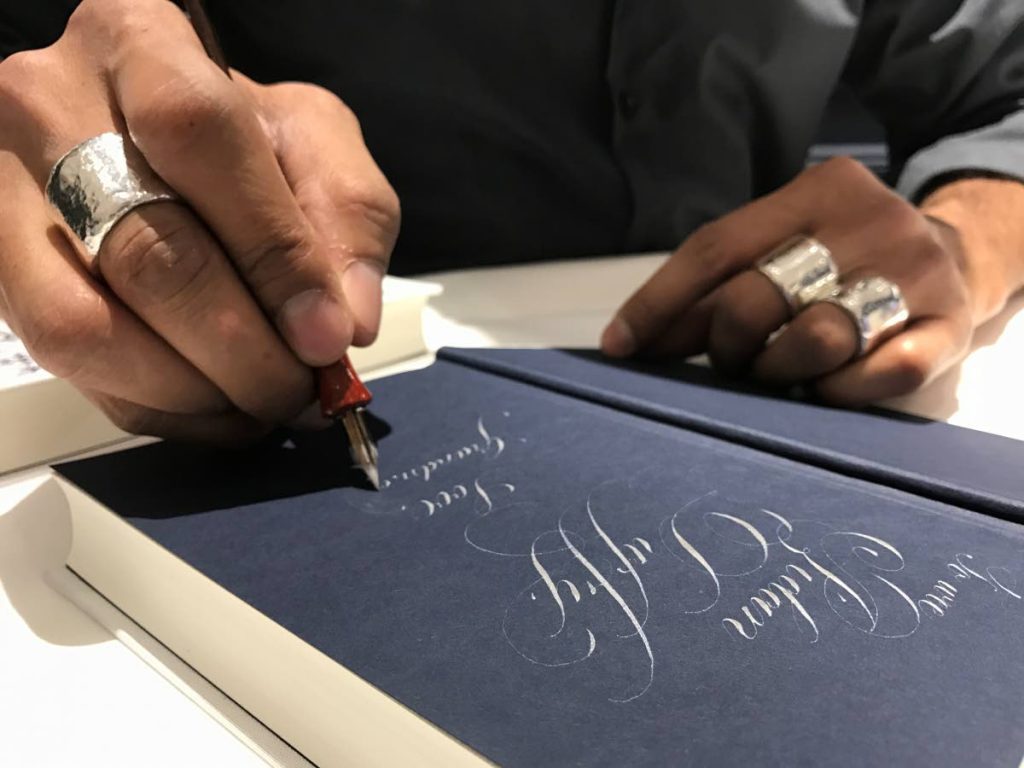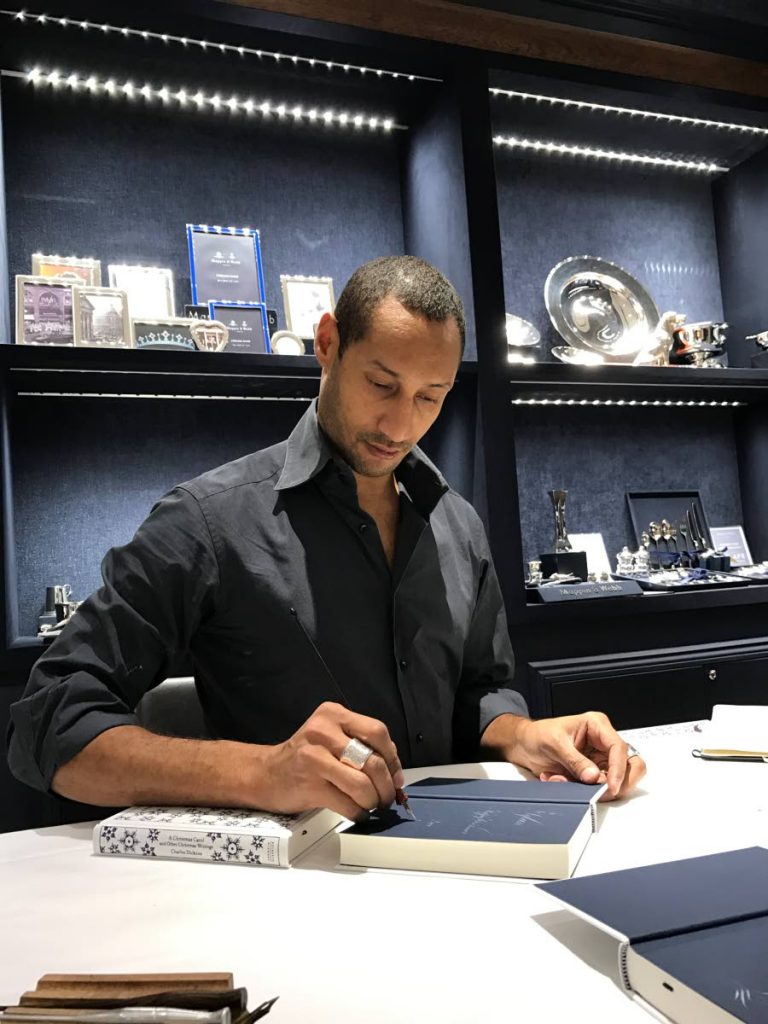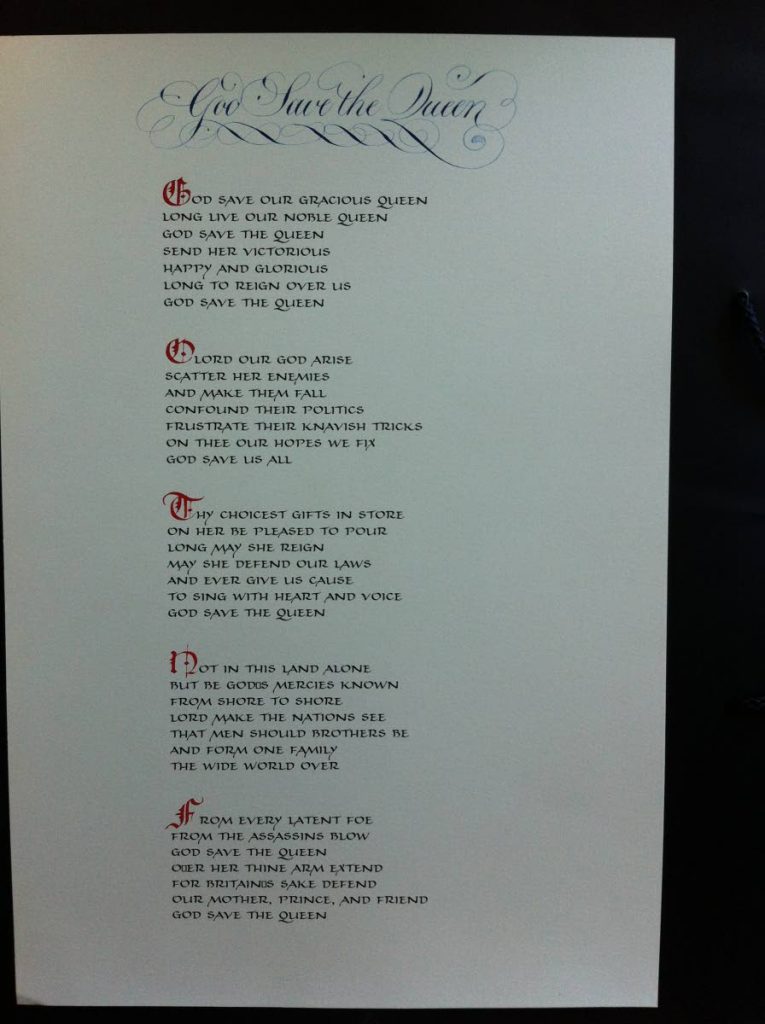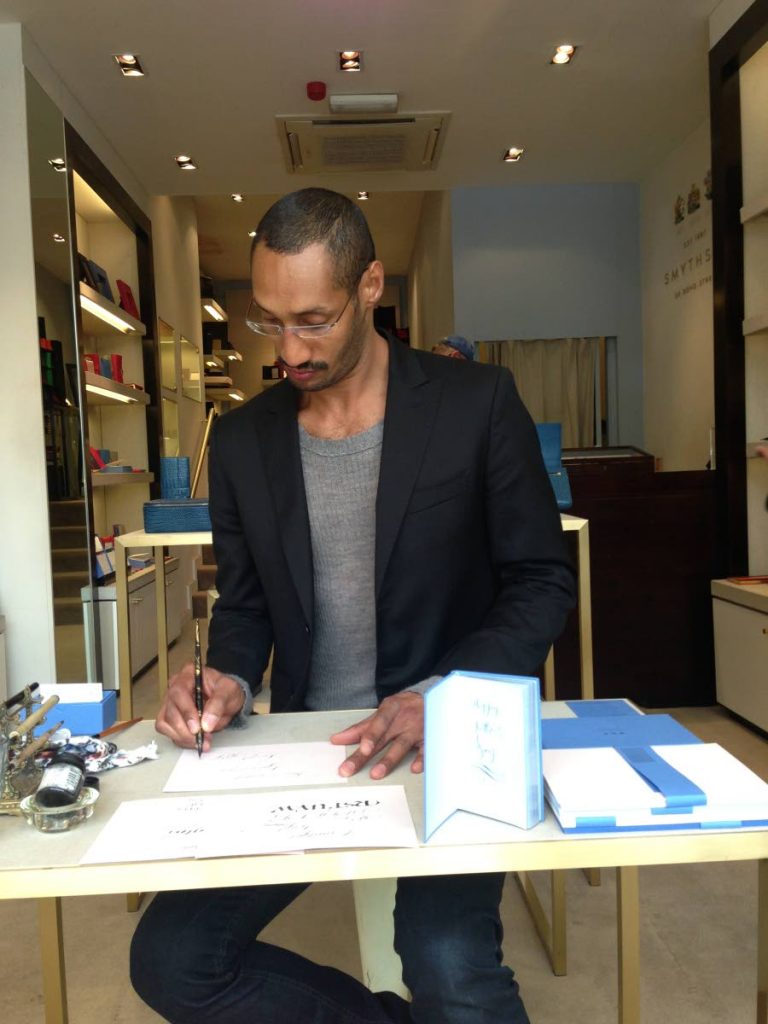Putting pen to paper: Reviving the art of calligraphy

Children and young adults raised in the digital age are recording their stories in the form of videos posted to social media, while other forms of communication, such as the rotary telephone and hand-written letters have faded quietly into the background over the years.
Interestingly enough, it is this same technology that has helped to revive interest in one of the oldest and most creative forms of written communication. Calligraphy is the art of producing decorative handwriting or lettering, usually using a pen or brush.
Like many other creative artists, calligraphers have used social media platforms to display their work and the mesmerising movements of their brush strokes have helped many of them garner huge followings.
Instagram sensation PAScribe has amassed over 100,000 followers with his hypnotic handiwork, and his impressive resume is proof of the resurgence of interest in the field. Born in Trinidad and based in England, Paul Antonio Attong (known professionally as Paul Antonio) is trained as a calligrapher, gilder and heraldic artist and teaches both traditional and modern calligraphy. Heraldry is the art of pictorial representation of genealogy, as through coats of arms, crests etc.
“In the last 20 years, calligraphy has seen a huge resurgence across the planet. There are now more calligraphers than ever,” said Antonio. “When computers came in, people thought, ‘This can do everything,’ and so lots of skills started to die. (Over time) people realised that computers are really a tool and people (who had to ) sit in front of them constantly started to hate the screen.
“Even people who work creatively on computers would tell me, ‘I can see it happening on screen, but I am not actually doing it. It is going through the mouse or the stylus and onto the screen. I want it to go through my hand, through the pen and on the paper.’”

He said in many ways, technology has served to push artists away from their creativity.
“People wanted physical touch (and) what’s the one thing you can do that’s the easiest way to be creative? Pick up a pencil. Interacting with the tool and creating something you can touch. People watch you make something beautiful (online) that is physical and they feel a part of the process, even if they are just viewing, and it encourages them to try.”
Antonio began his journey to calligraphy at the age of nine. “I have always loved old books, letters and maps. I remember seeing a double-page spread out of a book…and telling my mother, “This is what I want to do.’”
He took calligraphy classes, but his tutor told him he was too advanced.
“I was very excited, but also depressed, as I did not feel I knew enough to teach (and) I really wanted to learn.”

Antonio left Trinidad in 1989. Winning scholarships to study in England, he trained for four years. He spent a year at the University of Reading in a type-history course, two years at Reigate College studying calligraphy, gliding and heraldic painting and another year at Birkbeck University studying English palaeography (the study of ancient writings and inscriptions), archaeological illustration and Arabic calligraphy.
He would later work on a pyramid in Egypt, drawing hieroglyphics for the Metropolitan Museum in New York City. He has worked for top designers in England including Gucci, Tom Ford, and Yves Saint Laurent, and worked for 20 years as one of the four Crown Office scribes, hand-writing some of the laws which the queen has signed.
Antonio is the author of Copperplate Script: A Yin and Yang Approach, which illustrates a new and innovative technique for learning copperplate script – a style of calligraphic writing. He is currently working on collaborations with companies making calligraphy products, including a pen prototype with Japanese company Kuretake.
“In Asia, calligraphy is a very important part of their society. Lots of companies make products geared toward calligraphy in the East…Not only is there a boost in interest, but there is a boost in products. Because of social media, people started interacting with the people who inspired them.”
Antonio also teaches a calligraphy meditation course.

"I recognised very early on that calligraphy was intrinsically linked to the generating of a meditative field. If you’re writing slowly, patiently, it creates a field of peace. People watching the writing become calmer, and experience emotions because you’re allowing them the space to feel peace."
After an illustrious career, Antonio has redirected his talents in recent years to teaching and has his eyes set on developing young Caribbean talent.
He contracted covid19 with severe symptoms earlier this year.
“I couldn’t walk. I still have long covid and struggle to breathe.”
He said he has been receiving messages from West Indians across the world who have been inspired by his work during the pandemic and are shocked to learn of his own Trinidadian heritage.
“I thought, it’s time to do something. I want to do a Zoom lecture demonstrating what calligraphy is (and) open it up to the West Indies. If we can get enough people, we can start a West Indies calligraphy society where I’ll give my time and set up training.”
Antonio said there are many applications for calligraphy in Trinidad and Tobago, especially in business.
“Instead of using a font, you can actually use your writing. You can write poems and put them on teacups or T-shirts. There are a lot of applications, especially in the field of fashion design.
“There are always documents needed by the government that can be written instead of printed. These documents should be written. Historically, they were written.”

While plans for virtual regional classes are still in the works, Antonio is offering a one-time open invitation for a calligraphy demonstration specifically for creative people in the region free of charge. The demonstration, he said, will show participants what calligraphy is all about.
"I had to win scholarships to study. I know there are talented people who simply cannot afford it, so I make room for that. We have great writing talent in the West Indies."
The link for the demonstration on November 27 will be shared across the Caribbean and is available for 500 participants.
Those interested can register at HERE.


Comments
"Putting pen to paper: Reviving the art of calligraphy"